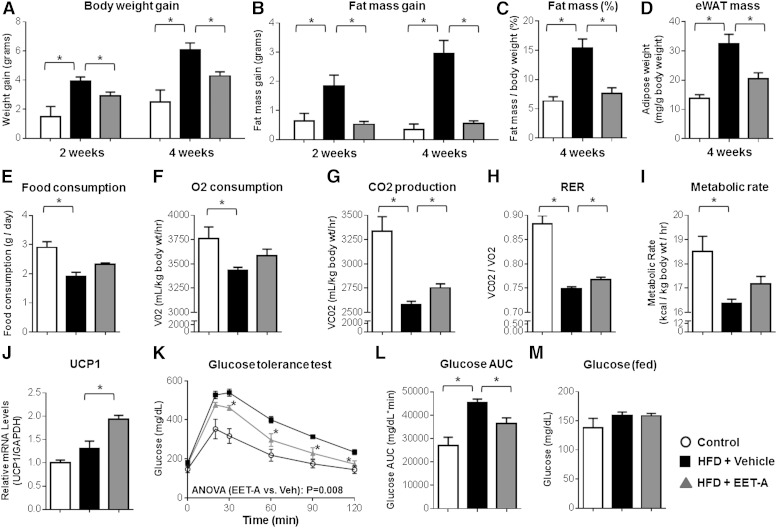Fig. 7.
The EET analog, EET-A, elicits anti-obesity effects and attenuates glucose intolerance in mice fed a HFD. Mice were fed a HFD (D12492) or control diet for 4 weeks (n = 4–8 per group). HFD-fed mice were treated with EET-A (100 mg/l in the drinking water) or vehicle control for 4 weeks. A–D: Compared with vehicle, EET-A treatment attenuated the HFD-induced increase in total body weight gain from baseline (A), fat mass gain (EchoMRI) from baseline (B), fat mass (EchoMRI) expressed as a percentage of total body weight (C), and eWAT mass at necropsy normalized by body weight (D). E: Cumulative food consumption over 24 h. F–I: Energy expenditure phenotypes, including VO2 (F), VCO2 (G), the RER (H), and the metabolic rate (I), were assessed at week 3. Energy expenditure phenotypes were averaged over 24 h and normalized to body weight. J: BAT mRNA levels of UCP1 were quantified by qRT-PCR, normalized to GAPDH, and expressed relative to the control diet group. K: At 4 weeks, blood glucose concentrations were quantified at baseline (fasting) and over 120 min following an intraperitoneal glucose tolerance test. The repeated measures ANOVA P value is provided. L: The corresponding AUC at 4 weeks was calculated. M: Blood glucose concentrations (fed) were quantified at necropsy. *P < 0.05 versus HFD-vehicle.

